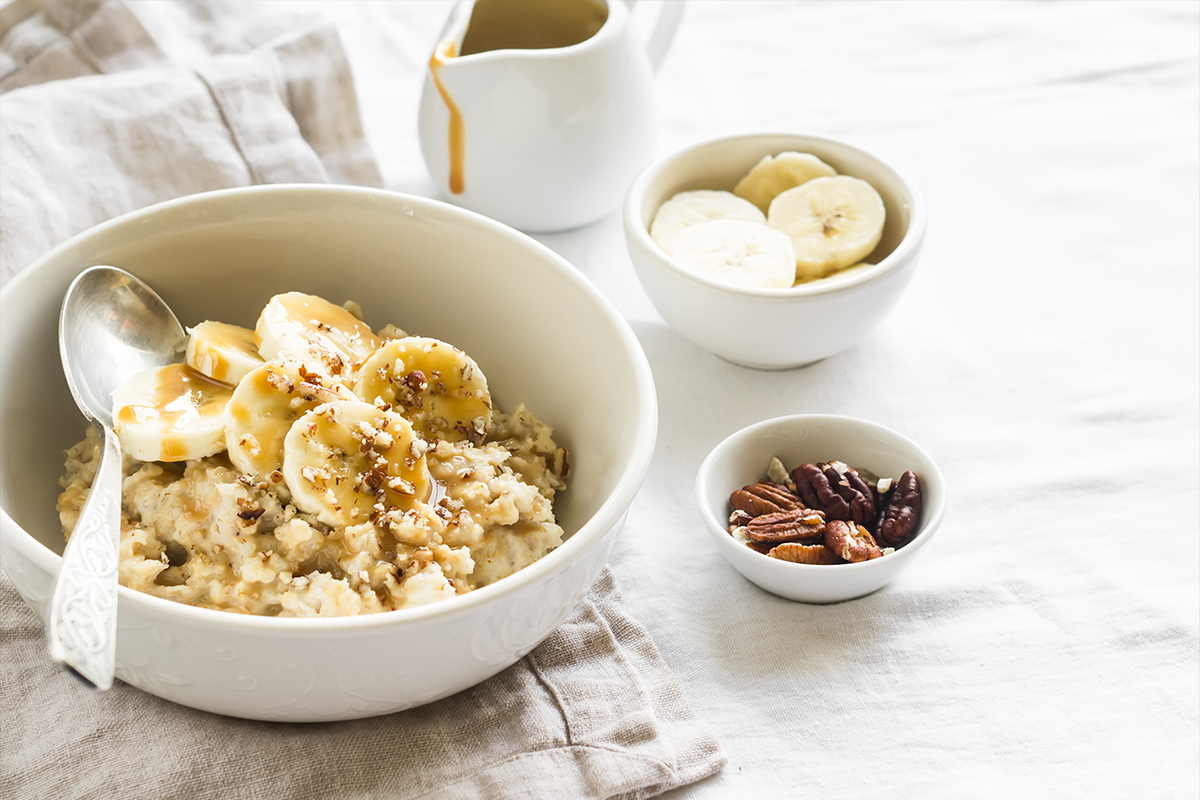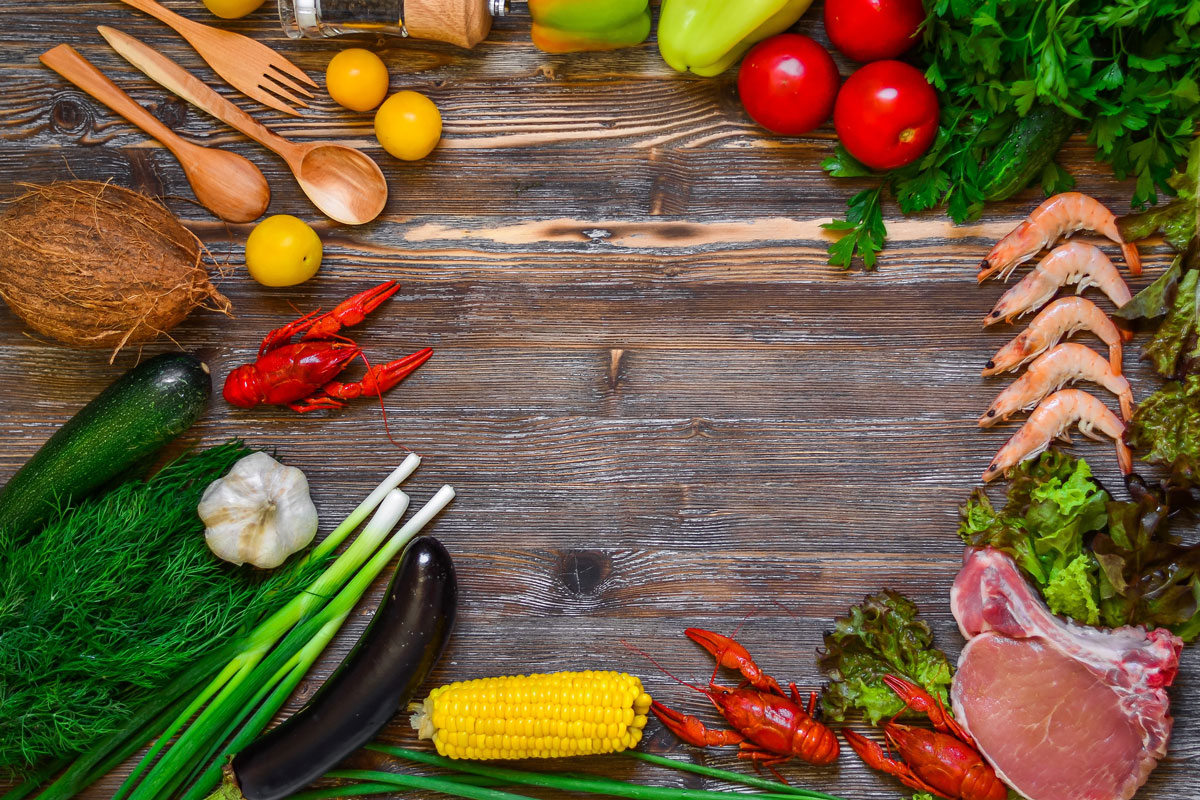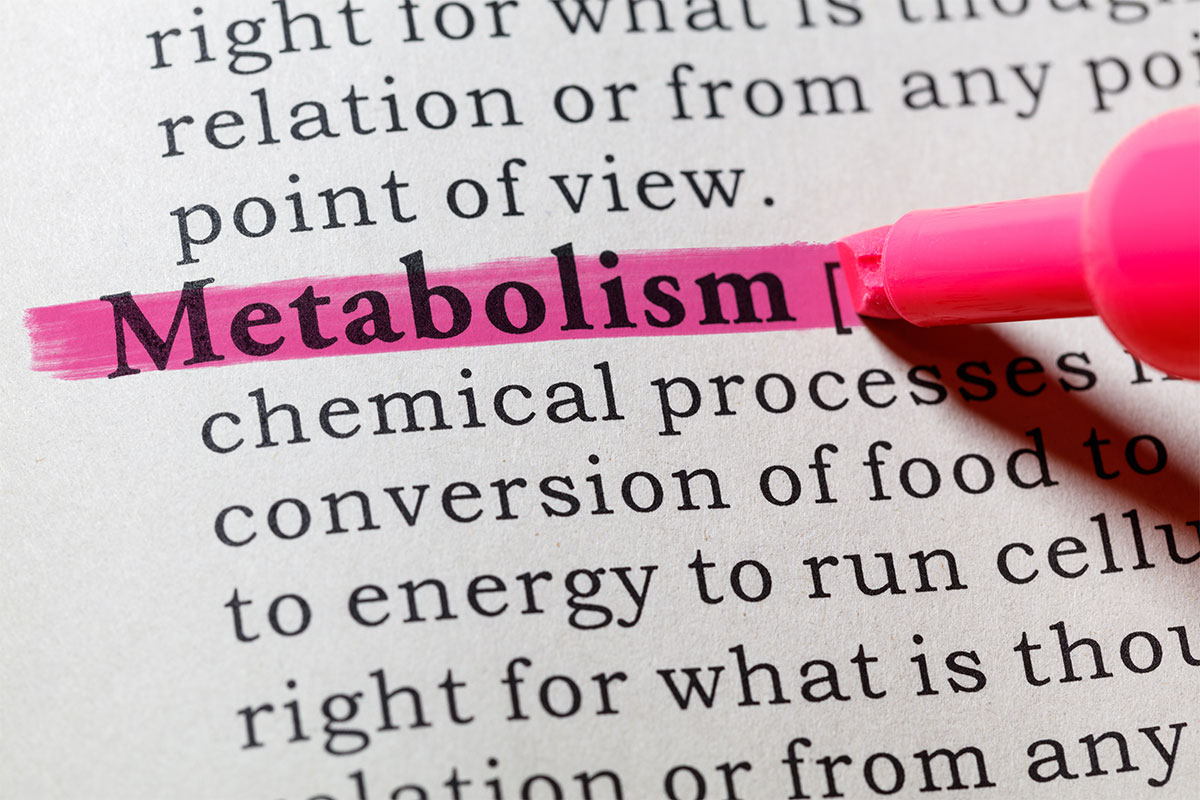Your Guide to Creating Your Own Meal Plan
Any good workout plan needs a good nutrition plan. We've compiled the best advice from our RDN, Debbie James, to help you construct your perfect meal plan.


Hello! I was wondering if you could help me determine how much protein I should be eating everyday. I’ve heard so many things. I am 24yo female, I strength train 4 days a week and do yoga 1x a week to break that up. I may be switching that up a bit, but wanted to get a good idea on how to calculate it (if that’s how it works). Thank you.
– Erol B.

The headlines (and advice) are confusing! Between “most healthy adults already get enough protein” and “US adults do not consume enough protein” there is a grey area of observation, based on how the research is interpreted. On the one hand, people that meet energy needs probably meet protein needs, while those that are dieting, recovering from illness or are aging may need more.
For a fit, healthy young adult who is consuming adequate calories to maintain weight, use the protein RDA of 0.8 gm/kg body weight as the guide. Using a range for percentage of calories from protein is less precise. From pounds, divide weight by 2.2 to get kilograms then multiply by 0.8 to get your target amount of daily protein. If you are looking to add lean mass then increasing protein to 1.2 gm/kg is suitable.
To determine if you’re meeting your goal, use a reliable source to count up your protein intake. Check that a diet app or website you’re using relies on the USDA Food Composition Database.
Resources:
– Debbie J., MS, RD
This article should not replace any exercise program or restrictions, any dietary supplements or restrictions, or any other medical recommendations from your primary care physician. Before starting any exercise program or diet, make sure it is approved by your doctor.
Some questions have been edited for length and/or clarity.
 Have a nutrition question? Our registered dietitian is ready to help!
Have a nutrition question? Our registered dietitian is ready to help!
Email nutrition@lafitness.com or submit your question below and it may be featured in an upcoming article!
Any good workout plan needs a good nutrition plan. We've compiled the best advice from our RDN, Debbie James, to help you construct your perfect meal plan.
Debbie James, RDN, helps answer a reader’s question about how much protein is too much for the body to process.
Debbie James, RDN, helps answer a reader’s question on breakfast and working out.


Greetings Nutrition: I am trying to get back in shape. I have a trainer at LA Fitness, and I think that I need to eat better. Could you give me some ideas of how I should be eating? Or a good meal plan that I can follow? I have been given a 1,416 calorie per day limit. Macros are: Carbs 203 grams, Fat 84 grams Protein 65 grams. I am having a hard time finding good breakfast options and making my protein of 65 grams daily. I don’t eat eggs so that cause problems for breakfast. I pretty much eat everything else. Any help that you can provide would be greatly appreciated.
– Eric H.

First and foremost, your provided macronutrient targets provide 1,828 total calories (812 calories carbohydrate, 756 calories fat, 260 calories protein), a considerable difference from your caloric limit. If the goal is qualitative, then the approach should be more precise. Not knowing which is more important for you, I’d go with the higher caloric target as you are working out and 1,400 calories may only be appropriate for significant weight loss, older or smaller-framed men.
We don’t provide meal plans, though several sample meals can be found throughout our Living Healthy blog. Since breakfast is the most challenging meal for you, here are some breakfast suggestions that provide roughly 550 calories.* I’ve broken that down as approximately 60 gram carb, 25 gram fat and 20 gram protein.
By working on your own lunch and dinner options, you can get close to the remainder macronutrients for the day. Quality can’t be overlooked, though! Foods with high micronutrient, fiber and unsaturated fat content will make a big difference even if you’re slightly off your gram or calorie goals.
* Calculated by Registered Dietitian Nutritionist using Fitday.com’s food log function. Findings were used along with RDN’s professional judgment.
– Debbie J., MS, RD
This article should not replace any exercise program or restrictions, any dietary supplements or restrictions, or any other medical recommendations from your primary care physician. Before starting any exercise program or diet, make sure it is approved by your doctor.
Some questions have been edited for length and/or clarity.
 Have a nutrition question? Our registered dietitian is ready to help!
Have a nutrition question? Our registered dietitian is ready to help!
Email nutrition@lafitness.com or submit your question below and it may be featured in an upcoming article!
Any good workout plan needs a good nutrition plan. We've compiled the best advice from our RDN, Debbie James, to help you construct your perfect meal plan.
Debbie James, RDN, helps answer a reader’s question about how much protein is too much for the body to process.
Debbie James, RDN, helps answer a reader’s question on breakfast and working out.


Hi, what would be the best supplement to become leaner and cut muscle?
– Lito J.

The leanest, most cut people are generally considered bodybuilders. They most commonly use arginine, beta-alanine, branched chain amino acids (BCAAs), caffeine, citrulline malate, creatine monohydrate, glutamine, and beta-hydroxy-methylbutyrate (HMB). Among these, creatine has been shown to be effective for muscle size and strength when added to a weight training program.1,2 The International Society of Sports Nutrition (ISSN) states that “creatine monohydrate is the most effective ergogenic nutritional supplement currently available to athletes in terms of increasing high-intensity exercise capacity and lean body mass during training.”2 Beta-alanine further improves lean mass gains and body fat loss in conjunction with creatine supplementation.1
Arginine and citrulline malate may have ergogenic effects but do not conclusively alter body composition. The BCAAs (leucine, isoleucine and valine) decrease muscle protein breakdown and increase skeletal muscle protein synthesis though these have not translated to increased lean mass. The stimulant caffeine, taken pre-workout, increases strength training performance which allows you to do more muscle-building work.
Read about related topics on our Living Healthy blog – overall supplements and nitric oxide boosters.
Resources:
– Debbie J., MS, RD
This article should not replace any exercise program or restrictions, any dietary supplements or restrictions, or any other medical recommendations from your primary care physician. Before starting any exercise program or diet, make sure it is approved by your doctor.
Some questions have been edited for length and/or clarity.
 Have a nutrition question? Our registered dietitian is ready to help!
Have a nutrition question? Our registered dietitian is ready to help!
Email nutrition@lafitness.com or submit your question below and it may be featured in an upcoming article!
Any good workout plan needs a good nutrition plan. We've compiled the best advice from our RDN, Debbie James, to help you construct your perfect meal plan.
Debbie James, RDN, helps answer a reader’s question about how much protein is too much for the body to process.
Debbie James, RDN, helps answer a reader’s question on breakfast and working out.


Which unprocessed meats, vegetables, and fruits should I eat each day to get 100% daily value of vitamins and minerals without supplements?
– Charles E.

Great question, Charles! There are over 20 vitamins and minerals which need to be obtained in the diet because the human body cannot make them. The Reference Daily Intake levels – either Recommended Dietary Allowance (RDA) or Adequate Intake (AI) – for each micronutrient show how much is needed for men, women and children of various age groups. Your question’s wording refers to the Daily Values, which are not so specific.
According to the National Institutes of Health, “one value for each nutrient, known as the Daily Value (DV), is selected for the labels of dietary supplements and foods. A DV is often, but not always, similar to one’s RDA or AI for that nutrient.” The Daily Values are set by the U.S. FDA for labeling so that consumers can see how much of a nutrient is provided in a serving of a food compared to their approximate requirement for it. The Nutrition Facts panel shows the percent DV for certain vitamins and minerals. Readers – if you’re interested in more about food labels, check out our Living Health Podcast Episode 21!
Okay, so on to whether it’s possible to plan a 100% micronutrient complete day from whole foods. Yes! Though the amount of produce may not be realistic for a person to consume on a daily basis, or the energy provided may be inadequate or excessive for you. That’s one reason why a variety of food selected across several days is best for meeting one’s nutritional needs.
If you’re looking for a list of what to eat in one day that meets 100% DV, the best one could do would be to construct a day using nutrient analysis software which would still be compared to the RDA or AI for your age and gender, not DV. The following list shows how you can meet the DV for about half the essential micronutrients:
Vitamin C: 1 large orange
Vitamin D: 3 1/2-ounces salmon
Vitamin E: 1 cup raw broccoli, plus 2 ounces almonds
Vitamin K: raw broccoli from above
Folic Acid: 1 cup peas, 1 cup cooked spinach, and 5 long asparagus
B12 and B6: 1 cup plain yogurt and a banana, 1 ounce sunflower seeds, and 3 ounces roast beef
Calcium: cooked spinach and yogurt from above plus an 8-ounce glass skim milk, and 1 fig
Iron: red meat from above plus a large spinach salad, and 1 cup lentil soup
Magnesium: almonds from above plus 2 slices of whole-wheat bread, 1 ounce raisins, a baked potato, and 4 ounces grilled halibut
Zinc: whole wheat bread from above plus a burger patty, and 1 slice cheese
Restricting intake to only the three food groups you mentioned is more work, so you are on your own there. If you are adamant about doing so, I’d suggest using a sample menu as a template for starters then substituting for foods you won’t eat. Truly a personalized custom menu!
References:
– Debbie J., MS, RD
This article should not replace any exercise program or restrictions, any dietary supplements or restrictions, or any other medical recommendations from your primary care physician. Before starting any exercise program or diet, make sure it is approved by your doctor.
Some questions have been edited for length and/or clarity.
 Have a nutrition question? Our registered dietitian is ready to help!
Have a nutrition question? Our registered dietitian is ready to help!
Email nutrition@lafitness.com or submit your question below and it may be featured in an upcoming article!
Any good workout plan needs a good nutrition plan. We've compiled the best advice from our RDN, Debbie James, to help you construct your perfect meal plan.
Debbie James, RDN, helps answer a reader’s question about how much protein is too much for the body to process.
Debbie James, RDN, helps answer a reader’s question on breakfast and working out.


I have been eating a lot less, not meeting requirements, gaining weight, and noticing muscle loss. I’ve noticed a lowered metabolism and inflammation from stress. What can I do to fix these things?
– Angela M.

That is surely a mixed bag of concerns, Angela. Address the first problem you mentioned based on why you think you are eating a lot less. Time constraints? Opt for healthy convenience foods like prepackaged bowls. Depression/anxiety? Engage with others during mealtime and include a few favorite comfort foods. To meet micronutrient needs at least, you can add a daily multivitamin/mineral to cover your bases until your intake improves. Physical activity is the main option to stimulate metabolism. While resistance exercise builds muscle, aerobic exercise burns calories to tackle both your physique concerns. Incorporate more anti-inflammatory foods to combat the effects of chronic inflammation.
These include tomatoes, olive oil, green leafy vegetables, nuts, fatty fish, berries and citrus fruit.1 Lastly, practice good stress-management techniques. In addition to exercise, you can step away from the stressor, smile & laugh, reach out to a trusted friend, and meditate.2
References:
– Debbie J., MS, RD
This article should not replace any exercise program or restrictions, any dietary supplements or restrictions, or any other medical recommendations from your primary care physician. Before starting any exercise program or diet, make sure it is approved by your doctor.
Some questions have been edited for length and/or clarity.
 Have a nutrition question? Our registered dietitian is ready to help!
Have a nutrition question? Our registered dietitian is ready to help!
Email nutrition@lafitness.com or submit your question below and it may be featured in an upcoming article!
Any good workout plan needs a good nutrition plan. We've compiled the best advice from our RDN, Debbie James, to help you construct your perfect meal plan.
Debbie James, RDN, helps answer a reader’s question about how much protein is too much for the body to process.
Debbie James, RDN, helps answer a reader’s question on breakfast and working out.
Be the first to know about exclusive
content, deals and promotions